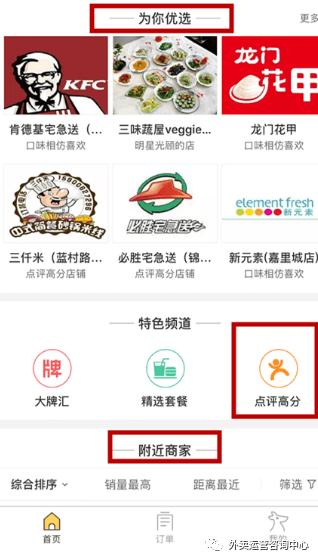热能动力工程设计技术附件方(中英文对照),下面我们就来说一说关于动力工程设计常用数据?我们一起去了解并探讨一下这个问题吧!

动力工程设计常用数据
热能动力工程设计技术附件方(中英文对照)
TECHNICAL APPENDIX OF THERMAL POWER ENGINEERING DESIGN
学术交流请私信或评论留言
2. 设计说明书
2. Design Specifications
2.1.1 设计依据、设计要求及主要技术经济指标
2.1.1 The design basis, design requirement and major technical economical index
1 列出与工程设计有关的依据性文件的名称和文号,如选址及环境评价报告、地形图,项目的可行性研究报告,政府有关主管部门对立项报告的批文、设计任务书或协议书等。
1 The name and number of reference document related to the engineering design, such as location and environmental assessment report, boundary line of land, project 3feasibility research report, project approval issued by the relevant governmental competent department, design specification or agreement;
2 设计所采用的主要法规和标准。
2 The main regulations carried out by the design and the adopted primary standard (including the standard name, number, era name and version number);
3 设计基础资料,如气象、地形地貌、水文地质、地震、区域位置等。
3 design basis information, such as meteorology, topography, hydrogeology, basic earthquake intensity and regional location;
4 简述建设方和政府有关主管部门对项目设计的要求,如对总平面布置、建筑立面造型等。当城市规划对建筑高度有限制时,应说明建筑、构筑物的控制高度(包括最高和最低高度限值)。
4 Briefly indicate the requirements of the relevant government departments to the project design, such as requirements on aspects like general layout, environment coordination and architectural style. When the city planning departments confines the building height, the control height of the buildings and structures shall be mentioned (including the maximum and minimum altitude limitation);
5 委托设计的内容和范围,包括功能项目和设备设施的配套情况。
5 briefly introduce the content and scope designed according to the commission of the construction unit, including the supporting situation of the functional project and equipment or facilities;
6 工程规模(如总建筑面积、总投资、容纳人数等)和设计标准(包括工程等级、结构的设计使用年限、耐火等级、装修标准等)。
6 The project scale (such as the total construction area, total investment and accommodation population), project design scale grades and design standards (including the structure's design life, building fire type, fire-resistant grades, fitment standards);
7 列出主要技术经济指标,如总用地面积、总建筑面积及各分项建筑面积(还要分别列出地上部分和地下部分建筑面积)、建筑基底总面积、绿地总面积、容积率、建筑密度、绿地率、停车泊位数(分室内、外和地上、地下),以及主要建筑或核心建筑的层数、层高和总高度等项指标。根据不同的建筑功。还应表述能反映工程规模的主要技术经济指标,如住宅的套型、套数及每套的建筑面积、使用面积,旅馆建筑中的客房数和床位数,医院建筑中的门诊人次和病床数等指标。当工程项目(如城市居住区规划)另有相应的设计规范或标准时,技术经济指标还应按其规定执行。
7 The main technical and economic indexes, such as the total construction area, total floor area and categorized building area (with list of building area of both aerial portion and underground portion respectively), total building base area, total greenfield area, floor area rate, building density, green rate, parking berthing capacity (including indoor, outdoor, ground and underground), floors of main building or core building, floor height and overall height and other indexes; according to different architectural features, major technical and economic indexes reflecting the project scale shall also be indicated, such as residential dwelling size, number, building area, floor area, guest room number and bed number of the hotel building, out-patient visits number and sickbed number of the hospital building, and other indexes; when the engineering project (such as urban residential area planning) is limited by other corresponding design codes or standards, the technical and economic indexes shall also comply with them thereof.
2.1.2 总平面设计说明
2.1.2 Design specification of general plan
1 概述场地现状特点和周边环境情况,详尽阐述总体方案的构思意图和布局特点,以及在竖向设计、交通组织、景观绿化、环境保护等方面所采取的具体措施。
1 summarize the features of the site actuality, peripheral environment condition and geological or morphological features, elaborate the idea intent and layout features of the general planning, and the physical measures adopted in aspects of vertical design, traffic organization, fire protection planning, landscape planting and environmental protection.
2 关于一次规划、分期建设,以及原有建筑和古树名木保留、利用、改造(改建)方面的总体设想。
2 explain the general considerations on primary planning, construction stages, the preservation, utilization and renovation (reconstruction) of original buildings and old trees or rare woods
1.1.3 建筑设计说明 建筑方案的设计构思和特点:
1.1.3 Building design specification , the idea and the features of building project design.
1 建筑的平面和竖向构成,包括建筑群体和单体的空间处理、立面造型和环境营造、环境分析(如日照、通风,采光)等;
1 The building layout and elevation include the spatial treatment of building group and monomer, the elevation modeling, environmental creation and environmental analysis(such as sunshine, ventilation and lighting)
2 建筑的功能布局和各种出入口、垂直交通运输设施(包括楼梯、电梯、自动扶梯)的布置;
2 Layout of building function, various gateway and vertical transport facilities(include stairs, elevator and escalator)
3 建筑内部交通组织、防火设计和安全疏散设计;
3 traffic organization of building inside, fireproof design and evacuation design.
4 关于无障碍、节能和智能化设计方面的简要说明;
4 Briefly indicate obstacle-free, energe-saving and intelligent design.
5 在建筑声学、热工、建筑防护、电磁波屏蔽以及人防地下室等方面有特殊要求时,应作相应说明。
5 When having special requirement in aspect of architectural acoustics、heat engineering、 prevention in building、electromagnetic wave shielding and antiaircraft basement, specification related to those should be mentioned.
2.1.4 结构设计说明 2.1.4 Structural design description
1 设计依据 1 Design basis
1)本工程结构设计所采用的主要法规和标准; 1) The main regulations and standards adopted in the structural design of this project;
2)建设方提出的符合有关法规、标准与结构有关的书面要求; 2) Written requirements put forward by the construction party in compliance with relevant regulations, standards and structures;
3) 要阐述建筑物所在地与结构专业设计有关的自然条件,包括风荷载、雪荷载、地震基本情况及有条件时概述工程地质简况等。 3) Mainly expounds the natural conditions related to the professional design of the structure at the location of the building, including wind load, snow load, the basic situation of the earthquake, and an overview of the engineering geology when conditions permit.
2 结构设计 主要阐述以下内容: 2 The structural design mainly elaborates the following contents:
1)建筑结构的安全等级、设计使用年限和建筑抗震设防类别; 1) The safety level, design service life and building seismic fortification category of the building structure;
2)上部结构选型概述和新结构、新技术的应用情况; 2) Overview of superstructure selection and application of new structures and new technologies;
3)采用的主要结构材料及特殊材料; 3) The main structural materials and special materials used;
4)条件许可下阐述基础选型;5)地下室的结构做法及防水等级,当有人防地下室时说明人防抗力等级。 4) Explain the basic selection when conditions permit; 5) The structure and waterproof level of the basement. When there is an air defense basement, the air defense resistance level is indicated.
3 需要特别说明的其他问题 3 Other issues that need special explanation
1.1.5 建筑电气设计说明 1.1.5 Description of building electrical design
1 设计范围 本工程拟设置的电气系统。 1 Design Scope The electrical system to be set up in this project.
2 变、配电系统 2 Transformer and power distribution system
1)确定负荷级别:1、2、3级负荷的主要内容。 1) Determine the load level: the main content of the 1st, 2nd and 3rd level loads.
2)负荷估算。2) Load estimation.
3)电源:根据负荷性质和负荷量,要求外供电源的回路数、容量、 电压等级。 3) Power supply: The number of circuits, capacity and voltage level of the external power supply are required according to the nature and load of the load.
4)变、配电所:位置、数量、 容量。 4) Transformer and power distribution station: location, quantity and capacity.
3 应急电源系统:确定备用电源和应急电源型式。 3 Emergency power system: determine the type of backup power and emergency power.
4 照明、防雷、接地、智能建筑设计的相关系统内容。 4. Related system content of lighting, lightning protection, grounding, and intelligent building design.
2.1.6 给水排水设计说明 2.1.6 Design instructions for water supply and drainage
1 给水设计 1 Water supply design
1)水源情况简述(包括自备水源及市政给水管网)。
(1) Brief description of water sources (including self-provided water sources and municipal water supply network).
2)用水量及耗热量估算:总用水量(最高日、最大时),热水设计小时耗热量,消防水量。
(2) Estimation of water consumption and heat consumption: total water consumption (maximum day, maximum hour), design hourly heat consumption for hot water, fire-fighting water volume.
3)给水系统:简述系统供水方式。
(3) Water supply system: brief description of the system water supply mode.
4)消防系统:简述消防系统种类,供水方式。
(4) Fire-fighting system: brief description of the type of fire-fighting system and the mode of water supply.
5)热水系统:简述热源,供应范围及供应方式。
(5) Hot water system: brief description of heat source, scope of supply and mode of supply.
6)中水系统:简述设计依据,处理方法。
6) Water system: Brief description of design basis, treatment methods.
7)循环冷却水、重复用水及采取的其他节水节能措施。
7) Circulating cooling water, reuse of water and other water and energy saving measures taken.
8)饮用净水系统:简述设计依据,处理方法等。
8) Drinking water purification system: brief description of design basis, treatment methods, etc.
2 排水设计 2 Drainage design
1)排水体制,污、废水及雨水的排放出路。
1) Drainage system, drainage outlets for sewage, waste water and rainwater.
2)估算污、废水排水量,雨水量及重现期参数等。
(2) Estimated volume of sewage and wastewater discharge, rainwater volume and return period parameters, etc.
3)排水系统说明及综合利用。
(3) Description of the drainage system and its comprehensive use.
4)污、废水的处理方法。
4) Treatment methods for sewage and wastewater.
3 需要说明的其他问题。
3 Other issues requiring clarification.
2.1.7 采暖通风与空气调节设计说明
2.1.7 Design notes for heating, ventilation and air conditioning
1 采暖通风与空气调节的设计方案要点。
1 Key points of the design scheme for heating, ventilation and air conditioning.
2 采暖、空气调节的室内设计参数及设计标准。
2 Interior design parameters and design criteria for heating and air conditioning.
3 冷、热负荷的估算数据。
3 Estimated data for cooling and thermal loads.
4 采暖热源的选择及其参数。
4 Selection of heating and heat sources and their parameters.
5 空气调节的冷源、热源选择及其参数。
5 Selection of cooling and heat sources for air conditioning and their parameters.
6 采暖、空气调节的系统形式,简述控制方式。
6 Forms of heating and air conditioning systems, brief description of control methods.
7 通风系统简述。 7 Brief description of ventilation systems.
8 防烟、排烟系统简述。
8 Brief description of the smoke prevention and exhaust system.
9 方案设计新技术采用情况,节能环保措施和需要说明的其他问题。
9 The use of new technologies in the design of the scheme, energy saving and environmental protection measures and other issues that need to be explained.
2.1.8 热能动力设计说明
2.1.8 Description of the thermal power design
1 供热 1 Heat supply
1)热源概况; 1) Overview of heat sources.
2)供热范围; 2) Scope of heat supply.
3)供热量估算;3) Estimation of the amount of heat supplied.
4)供热方式; 4) Mode of heat supply.
5)锅炉房及场区面积、换热站面积、位置及房高等要求;
5) Area of boiler house and field, area, location and room height requirements of heat exchange stations.
6)热力管道布置方式及敷设原则;
6) heat piping layout and laying principles.
7)水源、水质、水压要求;
7) water source, water quality and water pressure requirements
8)节能、环保,消防及安全措施。
8) Energy saving, environmental protection, fire fighting and safety measures.
2 燃料供应 2 Fuel supply
1)燃料来源,种类及性能数据;
1) Fuel sources, types and performance data.
2)燃料供应范围;2) Scope of fuel supply.
3)燃料消耗量; 3) Fuel consumption.
4)燃料供应方式; 4) Mode of fuel supply.
5)灰渣储存及运输方式;
5) Ash storage and transportation methods.
6)消防及安全措施。
6) Fire and safety measures.
3 其他动力站房;3 Other power stations
1)动力站房内容、性质;
1) Contents and nature of power stations.
2)主要设备技术参数;2) Technical parameters of the main equipment.
3) 系统形式; 3) The form of the system.
4)站房面积,位置及其他要求;
4) Area, location and other requirements of the station house.
5)节能、环保,消防及安全措施。
5) Energy saving, environmental protection, fire fighting and safety measures.
2.1.9 投资估算编制说明及投资估算表
2.1.9 Notes for the preparation of investment estimates and investment estimate tables
1 投资估算编制说明资料
1 Information on the notes for the preparation of the investment estimates
1)编制依据;1) Basis of preparation.
2)编制方法;2) Method of preparation.
3)编制范围(包括和不包括的工程项目与费用);
3) Scope of preparation (items of work and costs included and excluded).
4)主要技术经济指标;
4) Main technical and economic indicators.
5)其他必要说明的问题。
5) Other necessary explanations.
2 投资估算表 2 Investment estimate table
投资估算表应以一个单项工程为编制单元,由土建、给排水、电气、暖通、空调、 动力等单位工程的投资估算和土石方、道路、广场、围墙、大门、室外管线、绿化等室外工程的投资估算两大部分内容组成。 编制内容可参照第3.10和4.9两节有关建筑工程概、预算文件的规定。在建设单位有可能提供工程建设其他费用时,可将工程建设其他费用和按适当费率取定的预备费列入投资估算表,汇总成建设项目的总投资。
The investment estimate form should be prepared as a unit of a single project, consisting of two major parts, namely the investment estimates of unit works such as civil construction, water supply and drainage, electrical, HVAC, air-conditioning and power, and the investment estimates of outdoor works such as earthworks, roads, squares, fences, gates, outdoor pipelines and greenery. The content of the preparation can refer to the provisions of sections 3.10 and 4.9 concerning the construction project estimates and budget documents. When it is possible for the construction unit to provide other costs of construction, other costs of construction and reserve fees taken at appropriate rates can be included in the investment estimation table and summarized into the total investment of the construction project.
3.3 设计图纸 3.3 Design drawing
3.3.1 总平面设计图纸 3.3.1 The general design layout drawings
1 场地的区域位置。 1 The regional location of the site
2 场地的范围(用地和建筑物各角点的座标或定位尺寸、道路红线)。
2 The scope of the site(land and coordinate of building angular point or location dimension and boundary lines of roads.
3 场地内及四邻环境的反映(四邻原有及规划的城市道路和建筑物,场地内需保留的建筑物、古树名木、历史文化遗存、现有地形与标高,水体,不良地质情况等)。
3 The reflection of the site and the surroundings(such as the original and planning urban road and buildings, ancient and well-known trees, historic landmark, currently existing landform and level, water body and adverse geological condition.
4 场地内拟建道路、停车场、广场、绿地及建筑物的布置,并表示出主要建筑物与用地界线(或道路红线、建筑红线)及相邻建筑物之间的距离。
4 Proposed road, parking area, plaza, green and location of the building in the site should be mentioned. The main buildings and site boundary(such as boundary lines of roads or property line)and the distance of adjacent building.
5 拟建主要建筑物的名称、出入口位置、层数与设计标高,以及地形复杂时主要 道路、广场的控制标高。
5 The name of the main proposed building, gateway location, number of plies, design level and if the formland is complicate, the main road and plaza controlling elevation.
6 指北针或风玫瑰图、比例。
6 North arrow, wind rose map and proportion.
7 根据需要绘制下列反映方案特性的分析图: 功能分区、空间组合及景观分析、交通分析(人流及车流的组织、停车场的布置及停车泊位数量等)、地形分析、绿地布置、日照分析、分期建设等。
7 Draw the analysis graphics that can reflect the poject property according to the requirement, such as function division, spatial organization and landscape analysis, green layout, sunlight analysis, stage construction.
,




